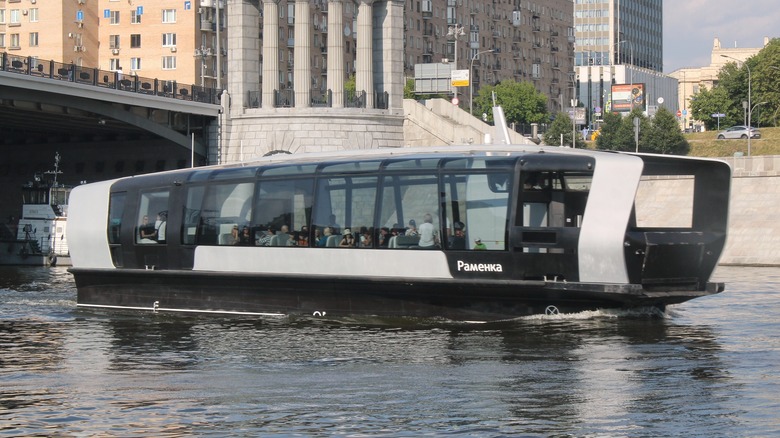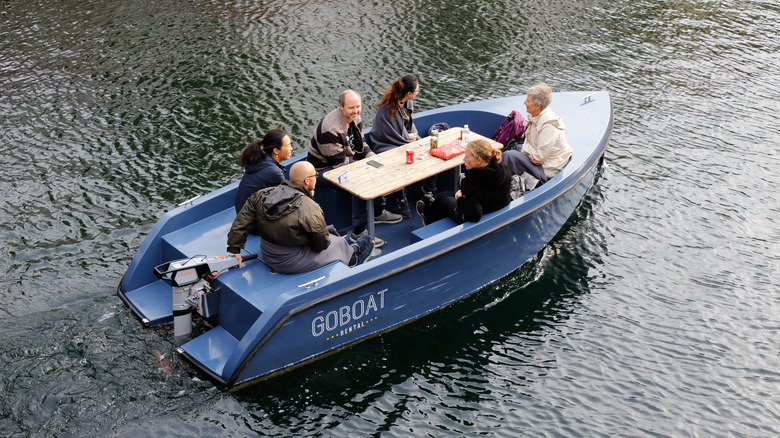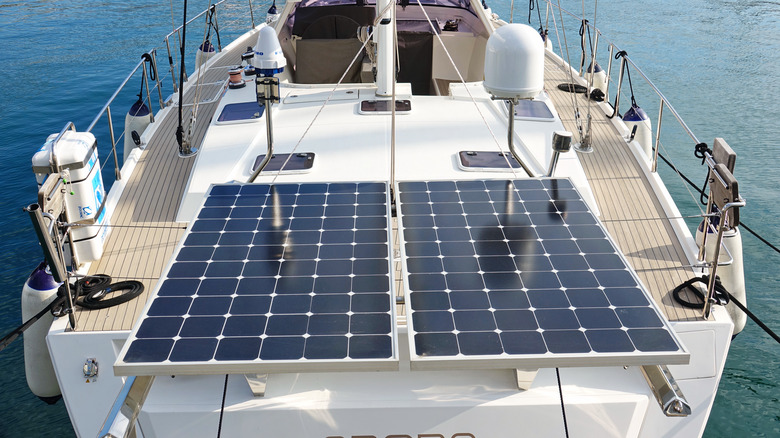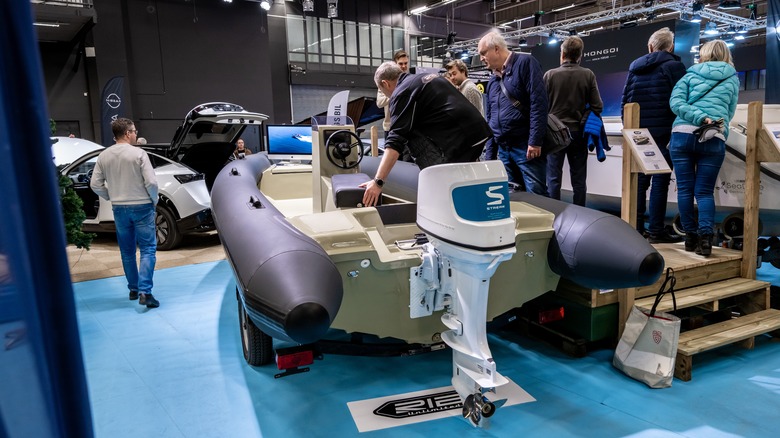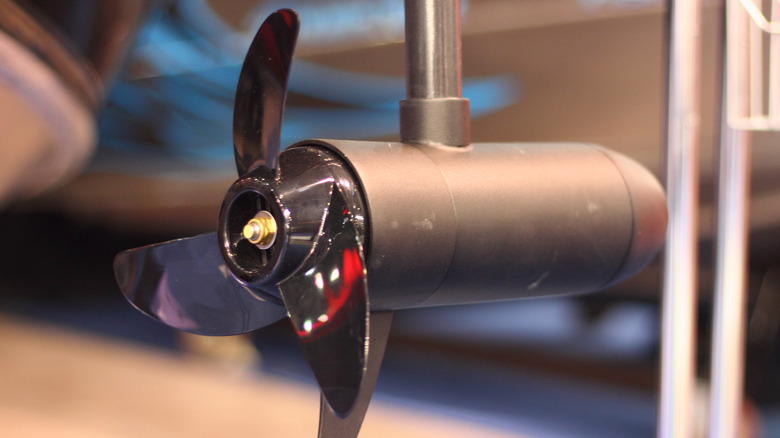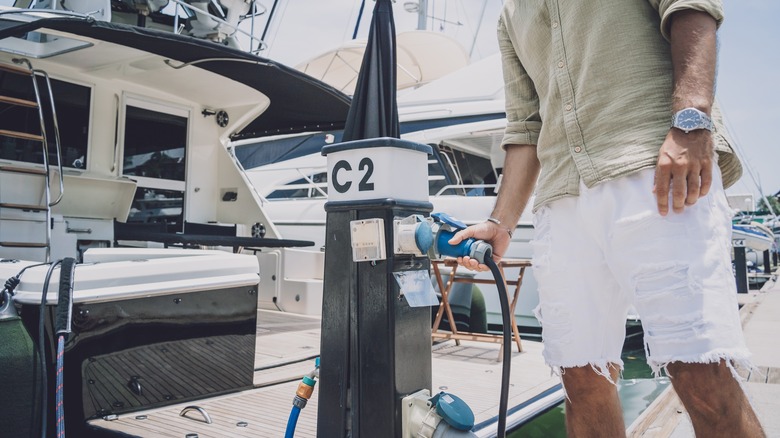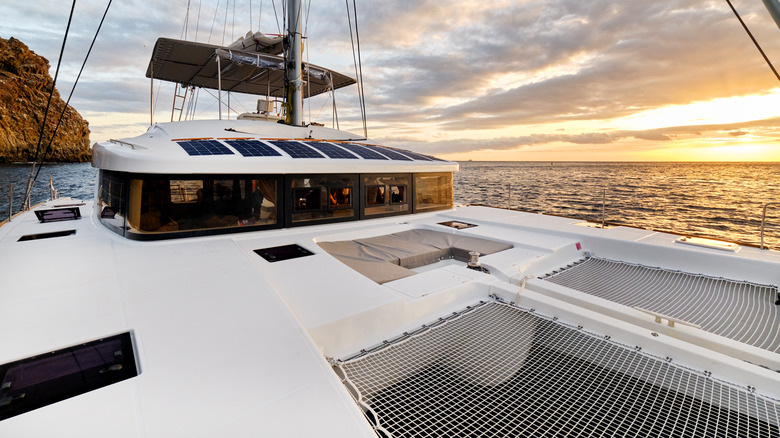Everything You Should Know About Electric Boats
It may sound crazy to some, but electric boats are more than just Teslas that float. They have made their presence known over the years and successfully managed to represent a significant shift in marine technology, embracing modern advancements to redefine water transportation for the new age. These technologically enhanced vessels are, naturally, powered by electricity, which ultimately distinguishes them from their more common traditional fuel-powered counterparts.
Despite using a different power source, it's beyond dispute that the electrifying water-bound vehicles have been precisely tailored to meet the various needs of water-based travel and recreation and showcase a robust blend of advanced engineering and sustainable energy solutions.
As the world continues to embrace this emerging trend and these nautical powerhouses continue to get people's attention, it's apparent that electric boats are becoming increasingly visible in various marine environments and making a real splash with the public. It's also quite intriguing to learn that the impact of these modern-day marvels is not just limited to a single segment of the market, which undoubtedly reflects a significant uptick in consumer approval and a broader acceptance overall throughout the industry.
The consistent growth and popularity demonstrate a dynamic change taking place and showcase a newfound appreciation for using alternative power sources in the realm of boating. The bold and innovative approach to powering these exemplary aquatic transports in such a modern manner undeniably offers a unique set of characteristics and capabilities consumers should most assuredly know about, especially if the idea of electric boats has more than sparked their curiosity.
The history of electric boats
The inception of electric boats traces its roots back to the early 19th century, notably marked by the pioneering work of German inventor Moritz von Jacobi. In 1839, Jacobi crafted an innovative 24-foot electric vessel in St. Petersburg, Russia, capable of ferrying 14 passengers. This groundbreaking creation set the stage for the evolution of electric boats. As the 1880s dawned, super-charged aquatic-based transportation began to surge in popularity, thanks to French electrical engineer Gustave Trouvé, who had patented a compact electric motor in 1880. Initially intended to power paddle wheels, this motor soon evolved to propel boats with a more efficient propeller mechanism.
The next electrifying moment came in 1882 when electrical engineer Anthony Reckenzaun unveiled the "Electricity," a vessel powered by storage batteries and was over seven meters long with a steel hull. It became popular for leisurely excursions along the River Thames, offering passengers a serene and clean journey. Capable of running for six hours at an average speed of eight miles per hour, it marked a significant milestone in electric boat development.
Electric boating was all the rage after 1890, but the 1920s saw a transition in maritime propulsion with the rise of internal combustion engines, overshadowing electric boats for a time. But things changed in 1968 when the Duffy Electric Boat Company of California began mass-producing small electric boats, signifying a renewed interest. The formation of the Electric Boat Association in 1982 and the advent of solar-powered boats further showcased electric boats' enduring appeal and potential in the modern era.
There are several energy sources to consider
It's pretty obvious, based on the origins and evolution of the designs, that there is ample evidence suggesting these electric water-bound vessels signify a major leap forward in nautical technology, focusing on eco-friendliness and efficiency. These sparked-out boats feature an array of modern energy solutions, boosting their functionality and adaptability across diverse water settings.
Delving into the assorted power sources utilized by these electrified floating vehicles uncovers an intriguing mix of conventional and advanced technologies, all playing a part in enhancing the effectiveness and ecological responsibility. The continued development of these technologies promises further improvements in the maritime industry, and more importantly, people should have a better understanding of the driving force behind electric boats.
In terms of electricity sources, onboard battery packs are seen as the primary energy providers and can be replenished through various methods. Solar panels are another way to go that serves as a sustainable option because they utilize renewable energy to charge up the current-crazy watercraft. When it comes to generators, both AC and DC types play a crucial role by recharging battery packs and extending the vessel's operational range.
And then, of course, there is hydrogeneration, which generates power from the surging vessel's motion in water and offers an innovative way to recharge the batteries. For added versatility, some electric boats come equipped with a hybrid system that combines both electric and fuel-powered motors, allowing for a flexible approach to energy usage and extending the range through generator-assisted electric refill.
The different types of electric boats
The world of electric boats offers various types designed to meet different needs on the water. Each version of electric boat on the market has its own unique set of characteristics and applications, making them suited for specific purposes. The options available for the consumer in today's market showcase the remarkable progress in marine technology, reflecting a commitment to sustainability and functionality.
This variety almost certainly guarantees that there will be a suitable option for every maritime need and preference. The thing to keep in mind is that these volt-powered aquatic vessels don't just bring the benefits of clean energy to the table. They also pride themselves on things like versatility and specialization, whether cruising through tranquil canals or undertaking practical tasks like transportation and rescue operations.
As far as boat types are concerned, interested parties should most assuredly have a few on their radar. Electric launches are small and versatile, ideal for short-range travel and leisure, frequently seen in recreational and transportation roles. For a touch of luxury, electric yachts offer a sustainable cruising experience, combining the opulence of traditional yachts with eco-friendly electric propulsion.
Navigating canals and inland waterways is the specialty of electric canal boats, which provide a serene and environmentally considerate way to explore these areas. Electric tenders, often used for short distances, are practical for ferrying people and supplies to and from larger ships. Lastly, electric Rigid Inflatable Boats, more commonly referred to as RIBs, stand out for their maneuverability and multi-purpose use, including rescue missions, transportation, and recreational activities, thanks to their inflatable collars and rigid hulls.
Electric boats use various types of propulsion
Marine propulsion technology has witnessed notable progress over the years, particularly within the electric boat sector, and this noticeable evolution has been successful in spawning a variety of motor types, each presenting a set of distinct advantages tailored to specific boating requirements. These innovations have not only helped reshape the landscape of maritime transportation but also highlighted the overall importance of long-term solutions that align engineering prowess with environmental considerations.
The combination has worked out well for the industry, propelling it to new levels. With all this information in mind, it may be smart to better understand the differences between every available version and acquire a better comprehension of how these water-logged voltage vessels run before diving into the world of electric boating.
Various kinds of electric motors propel electric boats with their own difference-making advantages and applications. The most common propulsion types for electric boats include outboard motors, inboard motors, bow thrusters, pod motors, sail drives, water jets, sterndrives, and surface drives. Outboard and inboard motors are the most common, with outboard motors being suitable for smaller boats and offering easy maneuverability, while inboard motors are often used in larger vessels and provide a lower center of gravity. Bow thrusters are used for short distances and limited maneuverability, while pod motors, sail drives, water jets, sterndrives, and surface drives offer different advantages in terms of efficiency, speed, and maneuverability.
The benefits of boating electric
Electric boats have seen significant technological breakthroughs and have become a bigger part of the conversation in recent years, mostly driven by the growing demand for environmentally friendly options regarding water-based transportation. It's no secret that they have a significantly lower environmental impact than traditional fuel-powered vessels.
But many may not realize that they not only have the uncanny ability to produce zero carbon emissions, leading to cleaner air and water, but because their engines are much quieter, they also offer a substantial reduction of noise pollution, which minimizes negative effects on marine ecosystems. Another vital factor is that the fact rechargeable batteries or solar panels power these vehicles helps reduce their carbon footprint significantly as well.
They also come with significant cost benefits, and one of the key financial advantages is the reduction in operating expenses because, unlike their fuel-guzzling counterparts, electric boats run on electricity, which is generally cheaper. These vehicles also have lower maintenance costs due to the absence of engine-related expenses such as oil changes, oil filters, transmission servicing, and fuel system maintenance. Other key financial advantages include the fact that there's no need for spare fuel onboard, further reducing expenses, and that their motors have fewer moving parts, ensuring greater reliability and longer lifespans, reducing replacement costs in the long run.
Other highlights to note are their notorious reputation for coming equipped with smooth maneuverability and responsive handling, making them easier to navigate in confined areas and at reduced speeds. They are also a much safer experience, even for those who don't have a ton of boating experience, making it less difficult and stressful to join the world of boating, electric style.
What the future holds for electric boats
Electric boating is gaining momentum as a worthwhile alternative to traditional gas-powered vessels, but there are still several challenges the growing industry has to deal with to survive. One major issue that needs to be addressed is the fact that they have a limited range compared to that of the fuel-based models, which can be a concern for boaters looking to travel long distances without recharging.
Innovations regarding power supply technology and electric motor efficiency are expected to improve their performance, making them more appealing to a broader market. It's also conceivable that the focus will potentially intensify on renewable energy sources, like solar and hydroelectric power. These vessels could also be privy to advancements in autonomous navigation systems, integrating cutting-edge AI to provide safer and more efficient voyages.
The design and aesthetics of electric boats are likely to evolve, reflecting a blend of versatility and style. As the demand for eco-friendly transportation continues to rise, manufacturers might explore new materials and construction methods to reduce weight and improve durability. The integration of smart technology for better connectivity and real-time monitoring of boat systems is anticipated to become standard.
In the recreational sector, electric boats could offer a new level of quiet and smooth sailing, making them ideal for leisure activities. The commercial and industrial sectors might witness a shift towards electric propulsion for cost-effective and environmentally responsible operations.
